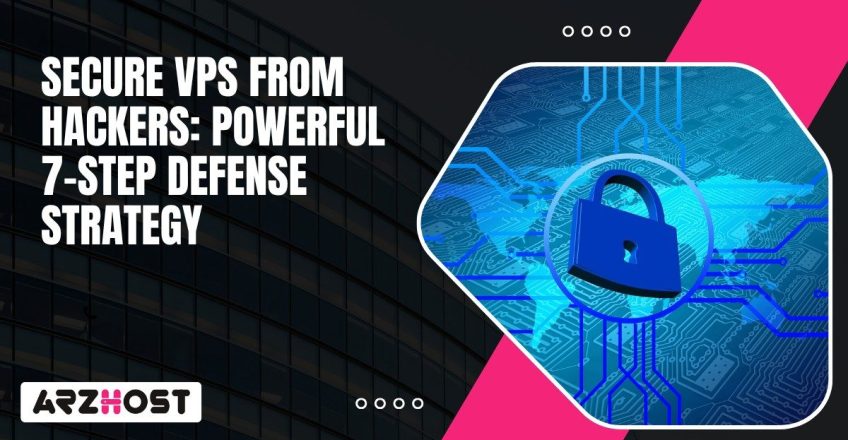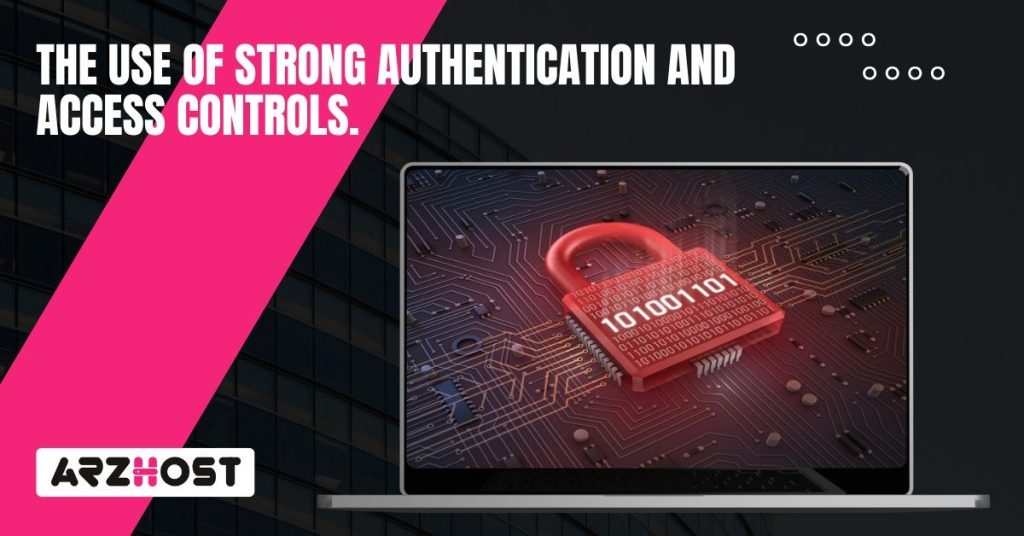
A Virtual Private Server has critical workloads such as web applications, database servers and mail servers. So it is an attractive target for attackers. Weak passwords, vulnerable operating systems, and careless SSH configurations allow brute force attacks, malware and ransomware to occur. For example, bots are scanning the internet 24/7 looking for open ports. And when they find some will hit those ports with automated exploits.
For this reason, it is important to Secure VPS From Hackers. Firewall rules implemented, intrusion detection systems, and multi-factor authentication are critical. Encryption on sensitive traffic is always helpful. Log monitoring will allow you to recognize unexpected activity before it expands to a complete breach. When you stack these defenses and are diligent in the upkeep and software updates, your server will remain stable. With strong security the data and unauthorized access remain safe, and you have control of the environment.
With VPS, you are given specific resources on a common physical server, allowing you more relevance over setup, software and security policy. The downside, with that control, is that you are responsible to patch the OS, manage firewall settings, lockdown SSH access, etc.
Shared Hosting is not the “safest” option since the resources are shared. With a VPS however it is much more secure. However, because the hardware remains shared, in case the host is poorly isolated and one of the virtual machines is compromised, other virtual machines would be risking it as well. That is, VPS security depends on how you ensure that the system is hardened, software is updated, monitors access policy and malware or brute force among other threats.
Grow Your Business Faster!
The best web hosts will go above and beyond to ensure the security of their shared servers!.
Click HereSeveral common weaknesses put VPSs at risk, making them favorite targets for hackers. Here are the main attack points to watch out for:
Setting up a VPS with security in mind from day one is essential. First things that need to be done are: find a good provider; run a secure Operating System; and to correctly setup user access. Once you lock down the basics, you significantly decrease the risks early-on, and set a good foundation for better security later on.
When Comparing the VPS Providers, look at those that have applied security in their infrastructure. Ensure that they also have built-in firewalls to prevent traffic that is malicious, before it hits your server. Denial of service flood prevention, which takes in the attacks. Automated backup mechanisms, so that your site can be recovered faster than a normal site.
Take into account the location of the data center as well. Hosting in a location that has GDPR (or similar legislation) will certainly be of great assistance in the case where you are processing customer data or personal information, and you will need to deal with complying and handling your data privacy.
Linux distributions like Ubuntu LTS or CentOS are excellent choices regarding VPS security. They release patches regularly, and there are large communities reporting vulnerabilities. So, it is important to update the operating system and install software frequently. Not installing a kernel patch for a week opens your VPS to known exploits that attackers are consistently searching for. Individualizing the updates can help to reduce that risk.
These accounts serve no purpose, and their removal or disabling of the account seals unnecessary access points, shrinking the attack surface , making the VPS more difficult to attack.
Securing access to your VPS is one of the best protections you can implement. This section is all about hardening SSH, enhancing your login security, and using firewalls and Setting Up VPNs on your VPS to help limit remote access. Each step reduces the attack surface and every barrier forces hackers to work harder.
Using fail2ban or similar tools
Then set up /etc/fail2ban/jail.local, so failed logins get banned fast. Fail2ban watches the logs for you and bans IP addresses that exhibit behaviors most associated with attacking. That is to say, bruteforce attempts get stopped before they pick up the pace.
Why use 2FA? Because even if someone stole your SSH key or your password leaks, they would need another factor, often time based code from your phone. That second wall of access protection will save you when credentials aren’t enough.
That setup allows SSH through your chosen port, blocks everything else by default, and gives you visibility into what’s open.
Now only your IP can hit SSH. Everyone else gets dropped.
For a tighter setup, try a VPN like WireGuard or OpenVPN. The idea is that you connect via the vpn tunnel first and then touch SSH. This keeps sensitive ports off the internet completely and all of your traffic is encrypted.
Firewall rules, VPN tunneling, restrictive SSS settings, fail2ban, and 2FA are definitely all layers of security that attackers must crack. That is what makes it hard to get without authorization.

After you have secured the fundamentals, the next step is securing the VPS itself. Hardening the system includes removing anything unnecessary, securing any service that is constantly up (web servers, databases) and making the operating system have strict limits. Each layer you add to the system decreases the attack surface and makes the system harder to compromise..
Removing unnecessary software
Fewer applications means fewer vulnerabilities. Every package is a new door that could be kicked in. Giving your site fewer options closes a lot of those doors.
Disabling unused ports and protocols
By closing these ports, you help remove an easy access point. Attackers will poke at anything you’d left open, so don’t provide them with more options, when you can avoid it.
Best practices for Apache and Nginx
This definitely blocks people from browsing your file structure and keeps traffic encrypted, which protects users and data from sniffing attacks.
Protecting MySQL/PostgreSQL
Databases are prime targets. If you don’t secure them, attackers can dump or manipulate your data without much effort.
SELinux and AppArmor are both about mandatory access controls where they determine what a process can do, even if it gets hijacked. This way, a compromised web service cannot suddenly read sensitive files or start an attack at the system level.
Basic setup
Check profiles with aa-status and toggle modes with aa-complain or aa-enforce.
Both solutions cage processes in tightly controlled environments. Even if someone finds a hole in Apache, MySQL, or SSH, they are still constrained with your rules. That is why these tools are so good for VPS security.
The ability to keep track and check on your VPS constantly is what will make you be ahead of any problems. A monitoring system alerts you of abnormal activity. Malware scanners alert you to dormant malicious activity and a backup solution allows you to roll-back if something goes wrong. With an appropriate response plan, you can keep running. Your setup.
Pick something that works with your setup. Nagios and Zabbix are common open-source tools that do the job well.
Install the agent on your VPS.
Connect it with your Monitoring Server, alarm on high CPU usage, low disk space, service crashes, etc. Then create a dashboard to have a quick glance at whether your system is healthy or not.
Monitoring logs with Logwatch or ELK stack
Good monitoring should give you warning signs. You can stop a break-in when your door is rattling instead of waiting until someone is already inside
Regular scans with ClamAV, rkhunter, chkrootkit
Signs of compromise to watch for
Concurrent monitoring of scans and metrics makes monitoring of the attackers all the more difficult.
Backups should be encrypted with GnuPG or whatever your backup utility has. In that case, the backup server might be hacked, but your data will be stored.
Backups are pointless if you’ve never tested restoring. When ransomware or a VPS crash hits, you’ll want muscle memory, not panic.
Once the cleanup is complete, perform audits and make reports. This is how you avoid suffering a similar attack again and show to yourself and others the VPS is secure again.
ARZ Host Goes Above and Beyond!
Providing free Let’s Encrypt SSL certificates with its hosting services!.
Click HereWhen defending a VPS, one has a lot to think about. Select a reliable provider, ensure that you update your software, restrict access, and detect any form of intrusion. Each of the layers complicates the occurrence of unauthorized intrusions.
Your server will be safeguarded by strong authentication, configuration, and a course of action in case anything goes wrong to counter the ever-changing threats. Proactive is the most suitable option.. Review settings, update or reinforce defenses and keep your data and services under lock.
ARZ Host understands the importance of security in the digital world and has put strong security measures in place to protect your data and online assets.
When patches drop, you can’t waste any time. Security updates are the priority, and you have to do them right away, no questions asked. The minor, routine stuff can be done weekly or every other week. Automating updates will help, but you have to constantly monitor your compatibility, so you don’t accidentally break something important.
Nagios and Zabbix are both great for system monitoring. Fail2Ban is effective in stopping brute force logins before they become a problem. Logwatch works well if you want reports. ELK stack (Elasticsearch, Logstash, Kibana) is preferred in case you need power and detailed log content and reports.. Using a combination of these tools provides you with decent coverage for security and performance events.
Yeah, but only if you’ve been keeping proper backups. Encrypted, off-server backups are what save you here. The steps generally look like this: isolate the VPS so the attack doesn’t spread, remove the malware, patch the hole, and restore your environment from backup. Then, reset every credential. If you skip any one of the steps, you can get attacked again.
Not really. It’s a reduction in bots that only scan default ports but anyone with the proper scanning tools can find it. The better move is to combine that port change with key based authentication, Fail2Ban, and preferably, two-factor authentication to ensure brute forcing is a waste of time.
Isolate the websites as much as you are able to. Use containers or make use of strict user permissions. Keep the applications and CMS platforms patched. Make the web server hardened by turning off unnecessary features like directory listing. Filter traffic and monitor traffic using a web application firewall (WAF). Lastly, ensure your monitoring solution knows the traffic patterns of each site; in this manner, you are able to distinguish the expected traffic/peaks and the malicious.
It means to grant accounts and services the absolute minimum access required. Nothing more. The less access an attacker has with an account they have compromised, the less damage they can do. In practice, this is things like not giving root access to everything, restricting sudo rights, and limiting database permissions. It’s one of the simplest ways to reduce the blast radius of a breach.
Latest Posts: